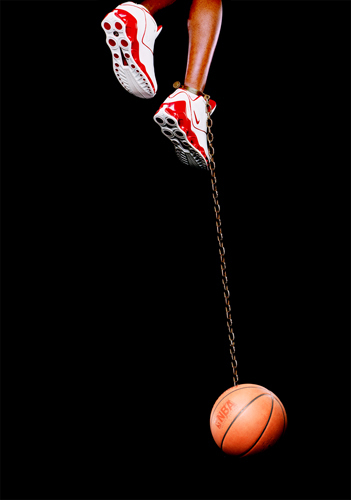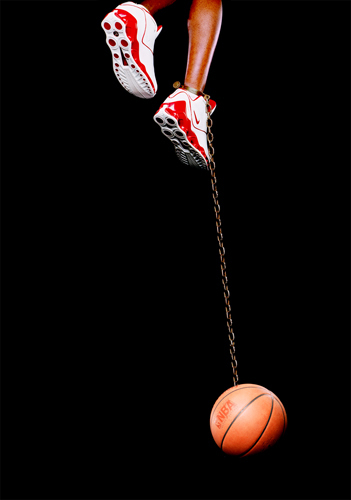Basketball and Chain, 2003
Lambda photograph; 30 x 20 inches; www.jackshainman.com
This week Your Daily Arts Break has focused on the work of African American artists who deal with issues of race, stereotype and cultural identity in their work. Today’s post features the work of Hank Willis Thomas who uses images from advertising and popular culture to deconstruct how society perceives marginalized peoples.

September 8-22, 2012; Previews: Sept. 6-7
Johnson Theater, TPAC
www.tennesseerep.org
This fall issues of race and cultural relations will be at the forefront of performing arts in Nashville as the Tennessee Repertory Theatre opens their season with Clybourne Park, Bruce Norris’ provocative response to Lorraine Hansberry’s iconic A Raisin in the Sun from 1959. Norris’ darkly comic vision of a fight between whites and blacks over the fate of a house in the neighborhood of Clybourne Park is played out in two acts set 50 year apart. Ben Brantley writes in his NY Times review of the current Broadway production that “like the tamer comedies of Yasmina Reza (particularly God of Carnage) Clybourne Park provides the eternal and undeniable satisfactions of watching supposedly civilized people behaving like territorial savages. But Mr. Norris cuts deeper than Ms. Reza, and he’s not nearly as whimsical or as polite.”

Chromogenic print with etched text on glass
26 1⁄2 × 22 3⁄4 in.
The Museum of Modern Art
Immediately after Clybourne Park ends its run at TPAC, the Frist Center for the Visual arts will open the first major retrospective of Carrie Mae Weems, who for over thirty years has explored issues of race, cultural identity, gender, representation and the historical record through conceptually based photography, text and video. About Weems career, New York Times critic Holland Carter wrote that “no American photographer of the last quarter century—-her first solo show was in 1984—-has turned out a more probing, varied, and moving body of work. . . . Weems has long been one of our most effective visual and verbal rhetoricians.” The Weems show will provide a more contemplative counterpoint to the incendiary theatrics of Clybourne Park. One hopes that these two back-to-back cultural events will play off of each other and start a larger conversation about issues of race and cultural relations that affect our community today.


